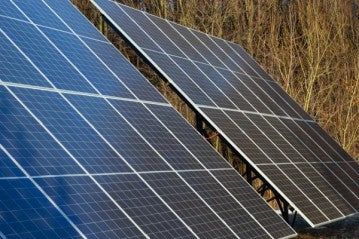
With the increasing popularity of renewable energy sources, hybrid solar inverters have emerged as an effective way to harness solar power. However, many people still have questions about whether hybrid inverters can work on the grid. In this blog, we will explore the compatibility of hybrid inverters with the grid and discuss the process of connecting them to the grid. Additionally, we will delve into the functions of hybrid inverters, including their ability to charge batteries from the grid.
As the popularity of hybrid solar inverters grows with the increasing adoption of renewable energy sources, many wonder if these inverters can work on the grid. This blog will address this question, along with discussing the process of connecting a hybrid inverter to the grid and exploring its functions, including the ability to charge a battery from the grid.
Can a Hybrid Inverter Work on the Grid?
Absolutely! For those who have doubts about the compatibility of hybrid inverters with the grid, rest assured that they can indeed work seamlessly on the grid. In fact, one of the primary functions of a hybrid inverter is to connect to the grid and transfer any excess energy generated by the solar panels back into the grid.
A hybrid inverter is specifically designed to function with both grid-tied and off-grid solar power systems. When operating in grid-tied mode, the inverter synchronizes with the grid and feeds surplus energy back into it. On the other hand, in off-grid mode, the inverter utilizes the energy stored in the batteries to power household appliances and other devices when the solar panels are unable to generate sufficient power.
Moreover, a hybrid inverter can perform various other functions related to grid power, such as providing backup power during a power outage and monitoring and controlling the energy flow between the grid, batteries, and solar panels.
How to Connect a Hybrid Inverter to the Grid?
A hybrid solar inverter combines the features of a solar inverter and a battery inverter, allowing it to handle power from solar panels, solar batteries, and the utility grid simultaneously. By merging functionalities into a single unit, a solar hybrid grid-tie inverter streamlines and enhances the performance of a traditional solar inverter.
Furthermore, it is advantageous for a hybrid inverter to be able to draw power from the grid to charge your battery storage system when necessary, considering that the availability of solar energy may fluctuate due to weather and seasonal variations. Now let's delve into the steps to connect a hybrid inverter to the grid:
1. Confirm with your local utility company whether you are permitted to connect your hybrid inverter to the grid. Each utility company may have specific requirements and regulations that must be adhered to.
2. Follow the manufacturer's instructions to install the hybrid inverter. It is recommended to hire a licensed electrician to ensure a safe and correct installation.
3. Set the hybrid inverter to Grid-tie mode. This mode enables the inverter to synchronize with the grid and transfer excess energy back into it.
4. Use a connection cable to link the hybrid inverter to the grid. Ensure that the cable is suitable for the voltage and current levels required by your specific inverter and utility grid.
5. Test the connection to ensure that the inverter is appropriately connected to the grid and functioning as expected. It may be necessary to monitor the inverter's output and make adjustments to the settings if needed.
How to Modify Hybrid Inverter Settings?
The steps to modify the settings of a hybrid inverter may vary depending on the manufacturer and model of the inverter. However, here are some general steps to guide you through the process:
1. Consult the user manual: Before attempting to change the settings of the inverter, thoroughly read the user manual. It should provide you with sufficient information on how to modify the settings of the specific hybrid inverter you are working with.
2. Access the settings menu: Most hybrid inverters have a settings menu that can be accessed by pressing a combination of buttons on the control panel. Look for a labeled button such as "Menu" or "Settings" on the control panel.
Once you locate the settings menu, navigate through it using the buttons provided on the control panel. Find the setting you wish to modify, such as battery charging or voltage output settings.
3. Make the desired changes: Once you locate the setting you want to change, use the buttons on the control panel to adjust the settings to your desired values.
4. Save the changes: After making the desired modifications, save the changes before exiting the menu. In some hybrid inverters, you may need to press a specific button or a combination of buttons to save the changes made in the settings.
Conclusion
As the demand for renewable energy continues to rise, hybrid solar inverters offer a versatile solution for effectively utilizing solar power. We have learned that hybrid inverters can indeed work seamlessly on the grid, allowing the transfer of excess energy generated by solar panels back into the grid. By following the steps outlined in this blog, you can successfully connect a hybrid inverter to the grid and take advantage of its various functions. Whether it's powering your home during a power outage or optimizing energy transfer between the grid, batteries, and solar panels, a hybrid inverter offers a reliable and efficient solution for your energy needs.


0 Kommentare